Cologne Travel Tips
I’m reminded of our walking tour during our travel to Cologne.
Our guide was this giggly, chirpy woman called Alice who welcomed us into the group and, shortly after, started the tour with making jokes about Colognians (before anyone reading this begins secretly plotting to murder me, I want to clarify that these jokes were completely innocent and also kinda cute by German standards).
She said that the people of Cologne are very different from the rest of Germany. Do I think she was right? We’ll find out soon.
11 FUN FACTS ABOUT COLOGNE YOU WON’T FIND IN TRAVEL GUIDES
While Cologne rakes up images of either the massive Cologne Cathedral (which is a must-visit when you’re there), or reminds you of the Eu de Cologne (that actually gets its name from the city, yaasss), there are so many other little quirks, intricate details that make Cologne the city it is!
That aside, it’s the largest city in North Rhine-Westphalia and is often considered one of the most liberal places in Germany.
I mean, where else would you find an ice cream cone plonked on top of a building? A giant 12-meter tall inverted ice cream cone sits on the top of Neumarkt Galerie in Cologne city center – because art.
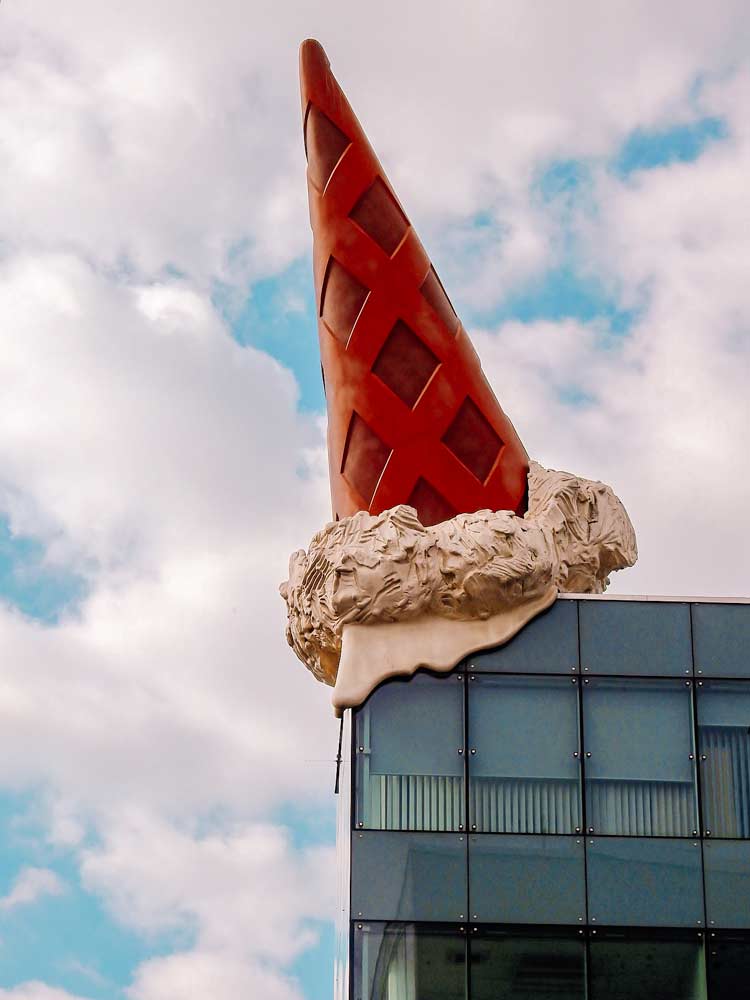
WHAT IS COLOGNE FAMOUS FOR?
Cologne is most famous for its Cologne Cathedral or Kölner Dom, an archetype of brilliant Gothic architecture that took over 6 centuries to build.
Not only that, Cologne also has 12 Roman churches built within the city center, making it a veritable ‘city of churches’. You can spend an entire day going in and out of all these churches and perhaps still not be able to see them all.
The German metropolis is also a prominent culture center with over 40 museums and 100 art galleries.
On the other hand, Cologne is known for its buzzing nightlife, thanks to a huge student population(the University of Cologne is the second largest in Germany). The city offers a host of nightclubs that play a diverse set of music for you to dance your blues away. Besides, there are cocktail bars, Irish pubs and incountable small, cosy bars lining the streets of Cologne.
While being extremely well connected to nearby cities like Dusseldorf and Bonn, Cologne also has an extensive train network zipping travellers to Amsterdam, Brussels and Paris in only a few hours.
The (befitting) icing on the cake is that there is a museum in Cologne dedicated to chocolate!
Here are 10 surprising things you should know about Cologne before you plan your visit:
1. Cologne was Originally a Roman Military Camp
Some 2000 years ago, Roman soldiers set their base in a tiny urban settlement of the Ubii, a Germanic tribe in the area.
Romans started mingling with women from the Ubii clan, and in time, a village was established by the name of “Colonia” (Literally took a village!)
What followed was a lot of people movement, development, and in the course of time, this became a major trade and production center for the Roman empire.
That is how Cologne, Germany’s fourth largest and one of Europe’s oldest cities, was founded.
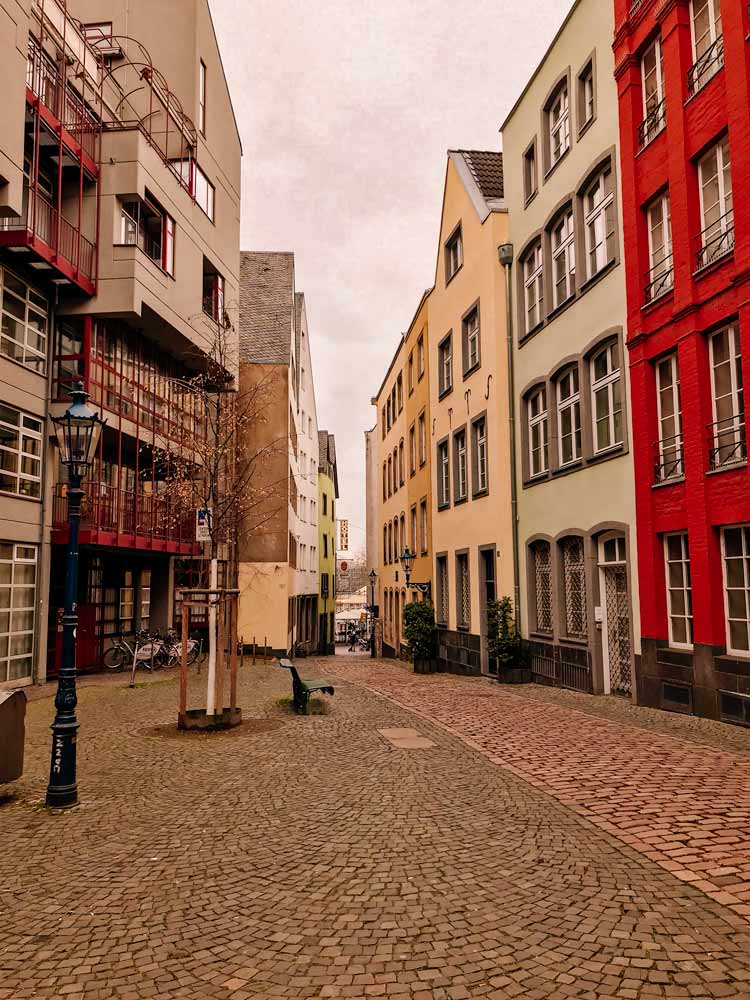
2. Colognians are Noticeably Different
I’m not one to stereotype, but having lived in the south of Germany (Bavaria), I can tell you that the general comportment of the people in Cologne is massively different from Bavaria.
Case in point: We drove from Nuremberg to Cologne, parked our car after some initial struggle (remind me to tell you more about that), and were soon walking around like typical tourists, eyes glued to our phones, navigating our way through the labyrinth Cologne streets. A woman came along, asked us if we were trying to get to the city center. We vigorously nodded and she told us we’d been walking in the wrong direction.
That was when I learned two important lessons:
- I look like a perplexed, out of place tourist no matter where I go. About time I made my peace with that.
- The woman was SO SWEET! She had no personal gain in guiding us but she did! So, yeah, I figured the people in Cologne really are quite nice.
It wasn’t just this interaction, though. Everyone we met in Cologne was fun, jovial, perpetually smiling, basically kind of loosened up.
It’s no surprise that Cologne hosts the biggest carnival celebration in Germany and if you know anything about it, you know the sheer debauchery that is Cologne’s Carnival – millions of people drinking Kolsch, sporting Disney gowns and eccentric constumes, and marching through the city streets for a whole week.
The revelry and celebratory energy is also palpable during Pride week in July every year, and Kölner Lichter, an annual fireworks display and party thronged by thousands of tourists and locals.
[Related: Top 14 Free Things to Do in Cologne]
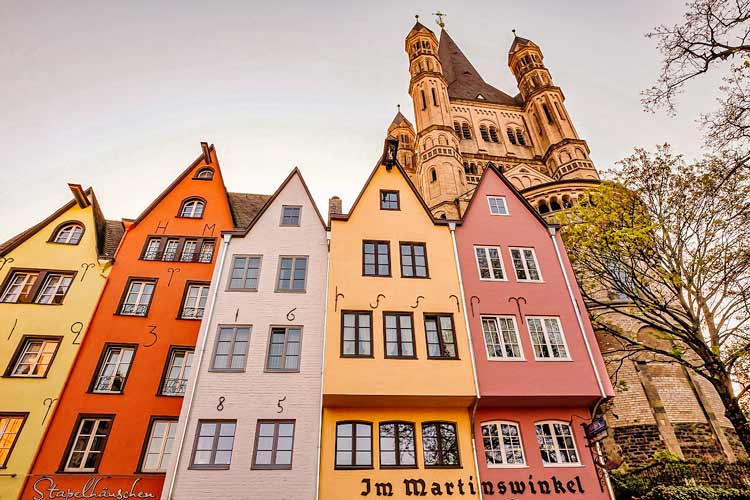
3. Parking in Cologne is a Nightmare
Okay so this is issued in public interest: I know that parking in Europe can, in general, drive people up the wall (pun intended).
If you, like us, are driving to/within Cologne and are scouting for a free parking spot in the city center, forget about it. It’s packed – well, all the time!!
Apparently, Cologne does get a rather huge influx of tourists throughout the year and that coupled with locals taking up spots here and there, doesn’t leave much for people like you and I. So I’m just trying to save you time – don’t bother looking for free spots. it’s an exercise in frustration.
If you can, try parking outside the city center. It makes a great walk plus you burn ’em calories, too!
Else, see if you can find an open spot at one of the parking garages (Parkhaus). It’s just for EUR 2 per hour (much cheaper than the open paid parking spots in the city).
4. The Cologne Cathedral is a Big Deal
… but you probably already know that! No brownie points, sorry.
What you didn’t know is that the cathedral is literally visible from every corner of Cologne. No matter where you go, just turn around and there’s a very high chance you’d get a peek of the two spires of the Kölner Dom. It’s visibly MASSIVE.

At a height of 144.5m, Cologne Cathedral is Germany’s second tallest church followed by the Ulm Minster in Baden-Württemberg. There are a solid 509 steps to get to the top of the cathedral where you can get sprawling views of the city.
And needless to say, the Cologne Cathedral is an intrinsic part of the historical identity and cultural personality of the city. It was declared a UNESCO World Heritage Site in 1996.
You might notice that the exterior of the Kölner Dom looks strangely dark colored, unlike most other such buildings. That’s because the sandstone used to construct the cathedral reacts with the sulphuric acid present in rain. This has, over time, rendered the Cologne cathedral its unique black color.
Random but fun fact: 93% of Cologne was destroyed during the World War II attacks on Germany by the Allied forces. The city was in a shambles but the one building that was deliberately not bombed was the Cologne Cathedral. Owing to its height and sheer size, it served as an easily recognizable landmark for the Allied troops to pick out zones for the bombing.
5. Stumbling Stones are Ubiquitous
The world can bear testimony to how the Germans have gone far and beyond to always acknowledge their past and the horrors of the holocaust.
Stolperstein or “Stumbling Stones” are one such example of their retribution for what the past endured. These are miniature memorials carved into the ground next to where victims of the holocaust last lived before being killed or taken prisoner.
The names put on there aren’t accidental; you can look up the name online and find corresponding details about the individual, their family, etc.
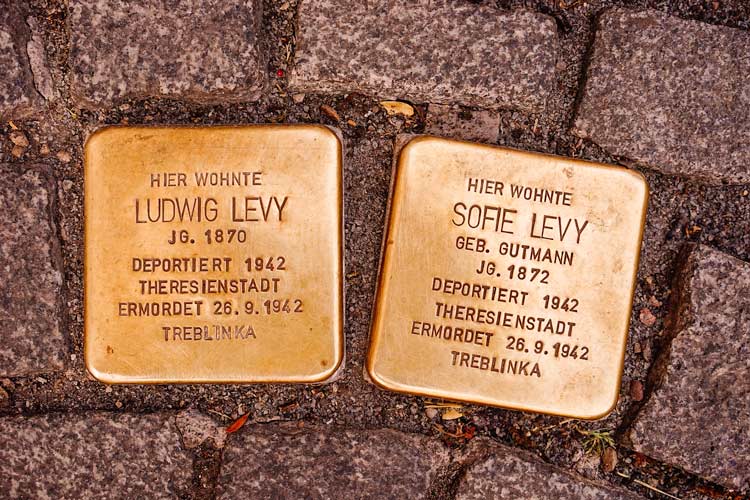
More of a country-wide appearance, these stones are especially noticeable in the streets of Cologne at multiple locations. Keep an eye out for them, and when you stumble upon one such stone, don’t forget to say a silent prayer.
6. There are 11 Rules to be Kölner
The people of Cologne take massive pride in who they are.
Colognians (or Kölner in German) are nonchalant and more chilled out than their German counterparts. Where does this calm, que sera sera manner of living come from?
Well, if you’d like to emulate the Colognian way of life, there’s a set of 11 guidelines to get you started!
Yes, there’s legit a set of rules called Kölsches Grundgesetz or Cologne Basic Law, which covers the following 11 rules to be Colognian. The Grundgesetz has been passed on through generations; the locals swear by these rules and use them as a yardstick for living the good life. Bookmark these for later:
- Et es wie et es (it is like it is): If you can’t change much, accept it and move on.
- Et kütt as wie et kütt (it comes as it comes): Good things take time and you cannot change their course.
- Et hätt noch emmer joot jejange (it has always worked out): It’s screwed up right now, but it’ll work out in the end.
- Wat fott es, es fott (what is gone, is gone): Complaining about bygones is futile.
- Et bliev nix wie et wor (nothing will be like it was): Change is the only constant. Be open to new things.
- Kenne mer nit, bruche mer nitt, fott domet (we don’t know it, we don’t need it): Take things with a pinch of salt. Not all innovations are practical.
- Wat wellste maache (what do you want to do?): Submit to your destiny.
- Maach et joot, ävver nit zo off (do it well, but not too often): Prioritize quality over quantity.
- Wat soll dä Kwatsch (what’s the pointless talk?): Don’t fuss about little things.
- Drinkste ene met (are you having a drink with me/us?): Demonstrates Colognian hospitality.
- Do laachste dech kapott (laugh until you cry): Always keep your sense of humor.
7. Cologne’s Kölsch Beer is Special
We already know that beer is bae in all parts of Germany.
But Cologne has a special type of pale, top-fermented beer called the Kölsch which is held to a very high standard. Goes without saying, it’s a significant part of the Cologne travel experience.
Thanks to the Kölsch Convention of 1985, this beer can only be brewed in or within a small radius of Cologne. There’s more: You cannot brew Kölsch if the pillars of the Cologne Cathedral aren’t visible from your brewery. Legit.
Currently only 13 breweries meet this convention.
You know what they say: With a great name comes great responsibility.
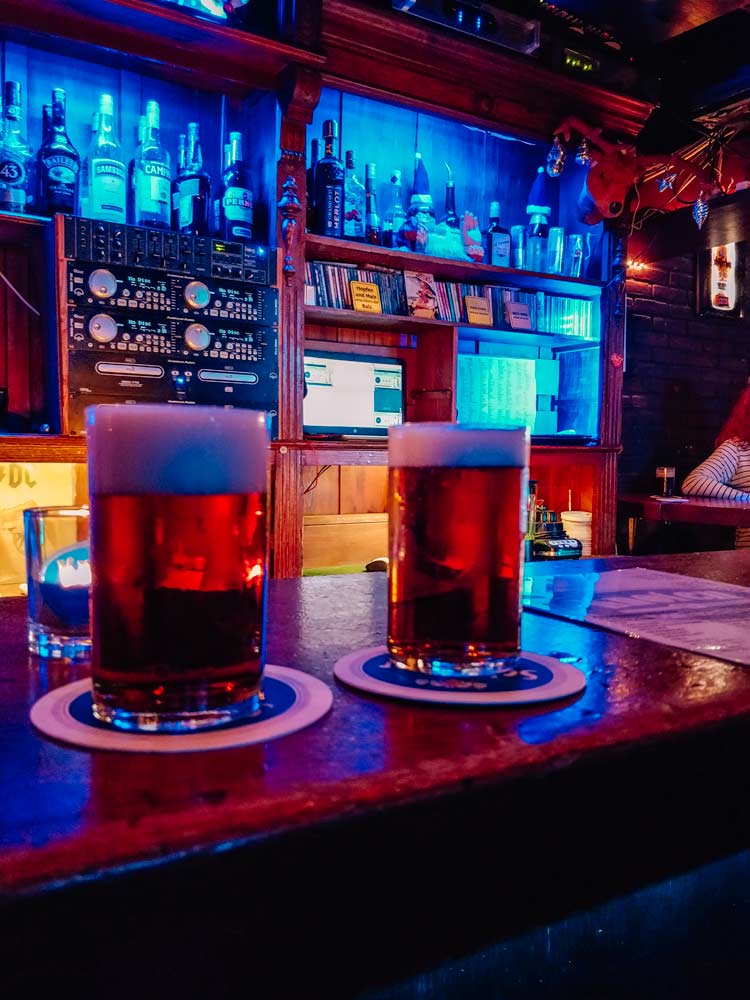
Fun fact: Unlike in Bavaria where beer is typically served in 1 liter mugs (think tall Oktoberfest beer stein sizes), Colognians feel the beer must be consumed quickly as it tends to lose its flavor when allowed to sit.
This is more of a Westphalia phenomenon, but while traveling in Cologne, get ready to drink beer in tiny 200 ml glasses (called Stangen)! Enjoy the sweet, refreshing taste of Kölsch with a side of ‘Halve Hahn’, a popular pub snack.
8. Going Bananas Gets a Whole New Meaning
Big Cologne travel tip: Keep an eye out for a banana sign that looks like this:
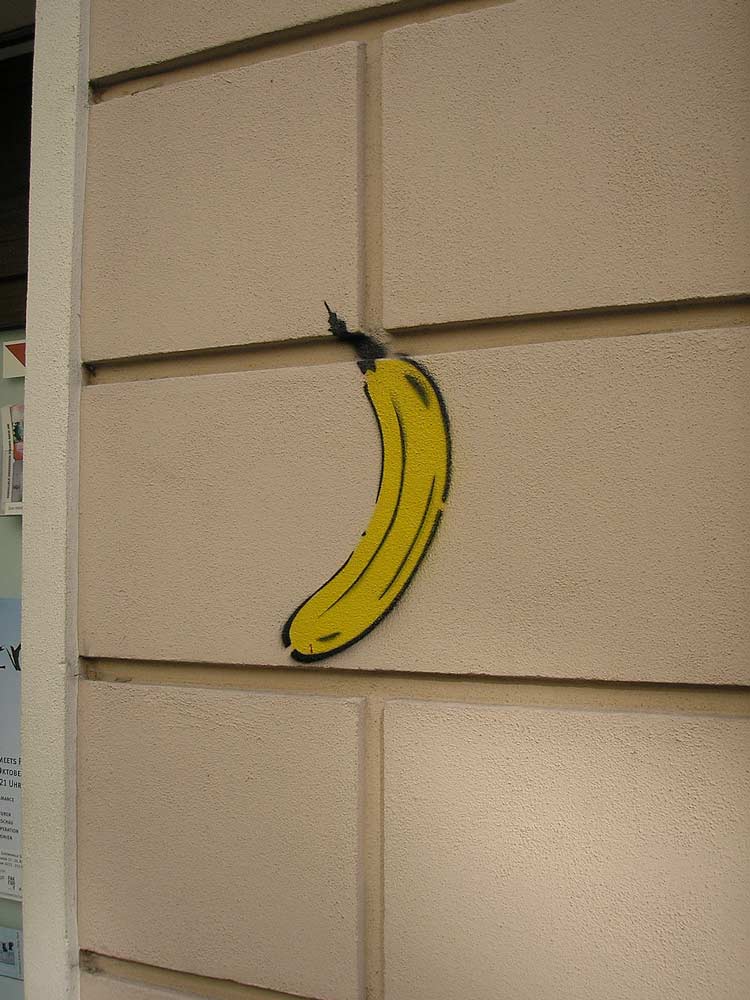
In the 1980s, Thomas Baumgärtel, an art student started spray painting bananas on the doors and buildings of art galleries in Cologne, as a way to bring to light the sudden boom in art spaces and wannabe artists. This transformed into a movement and over a period of time, the banana became the Michelin Star for art galleries.
The coveted banana now has a presence in many countries around the world and every such banana is spray-painted by Baumgärtel with specific dimensions and a carefully developed style. In fact, he visits two cities per year to honor art locations with his sought after banana spray art!
9. Cologne Rathaus has a Sense of Humor
The Cologne City Hall or Rathaus is an important building and houses the city council, part of the government, and other important offices.
The building has 130 stone sculptures of prominent personalities, including that of Martin Luther.
Now, here’s where it gets interesting: When you’re traveling to Cologne, make sure to visit the Rathaus.
You’ll notice that among all the sculptures there’s one that looks particularly off. Take a closer peek and you’ll realize it’s actually the sculpture of a man sucking on his own you-know-what. I’M NOT KIDDING YOU!
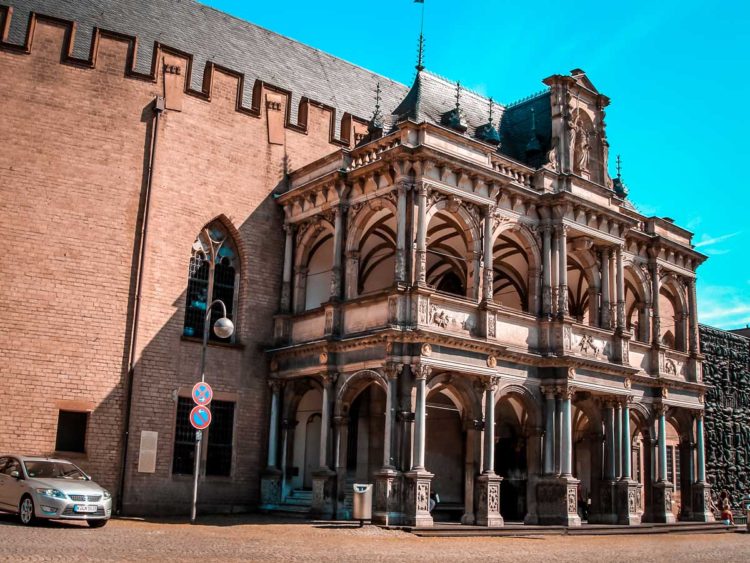
So as it turns out, Konrad von Hochstaden was the Archbishop in Cologne in the 13th century. A good guy that he may have been, he took the unprecedented decision to start taxing beer. * cue shock and horror *
This clearly didn’t sit well with the people, who colluded with the townhall architect to carve his sculpture in a way to serve him what he deserved. Hence the nasty, albeit hilarious sight, on the Rathaus.
Basically, proof that Colognians have a sense of humor. Which also happens to be one of the 11 tenets of the Kölsches Grundgesetz (refer to point 6 above)!
10. Eau de Cologne Origins
Eau de Cologne, as we know it, very evidently has the term “Cologne” in it, which signals its connection with the German city.
Is Cologne named after the city?
Well, yes.
Literally meaning “water from Cologne”, the perfume was developed in Cologne at the end of the 17th century by Johann Maria Farina, an Italian perfume maker. During the French occupation of Germany, Napolean Bonaparte took a liking to the fragrance, and it was renamed Eau de Cologne 4711 (thanks to the house number of the building it was produced in).
There’s also an exhibition come store called 4711 in Glockengasse where you can buy the OG fragrance from.
11. Beer Crawls in Cologne are Way More Fun
There’s the concept of the “Kiosk” in North Rhine-Westphalia, where you can buy confectioneries and beer, because Germany.
The locals often do beer crawls at Kiosks where they meet up at one of these stores, have a drink and move to the next. Quite the ideal way to spend an evening, I feel. Your thoughts? 😀
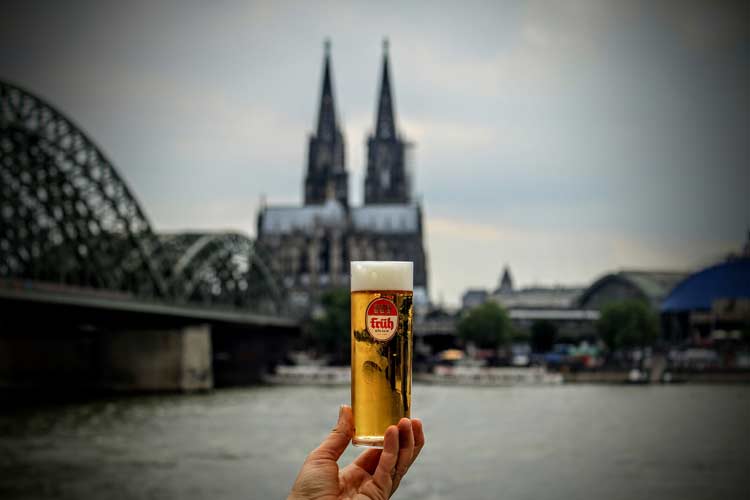

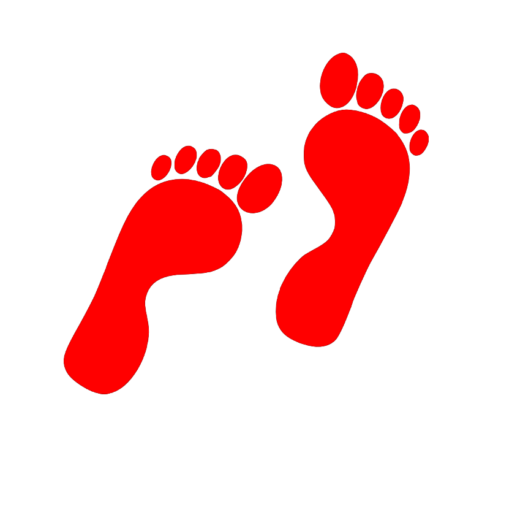
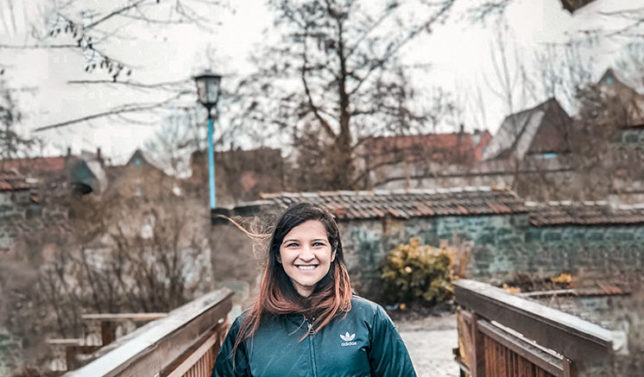
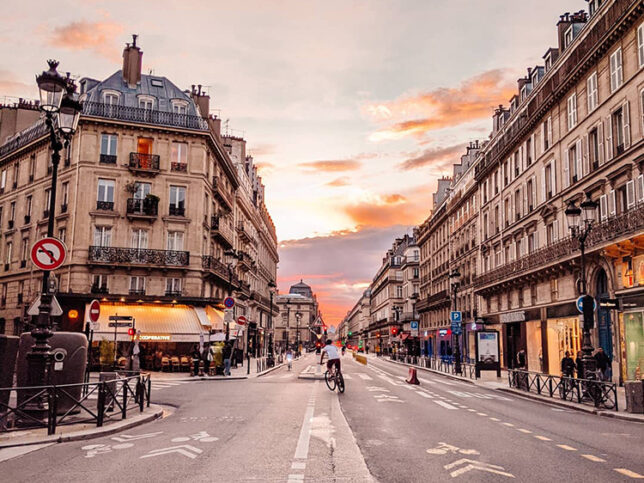
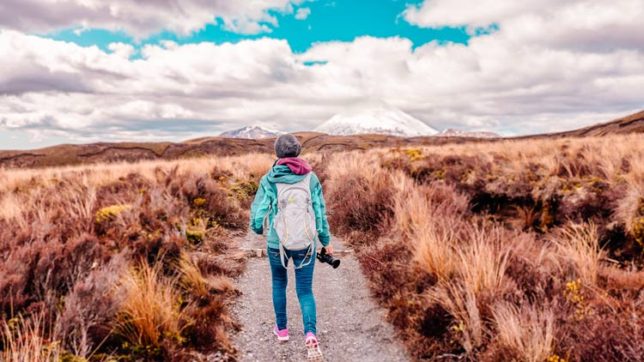


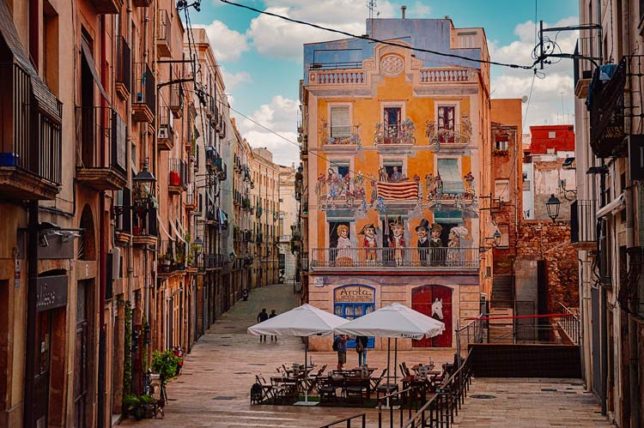
13 Comments. Leave new
Hi my friend! I wish to say that this article is awesome, nice written and include almost all important infos. I’d like to see more posts like this.
I love the 11 rules. I’ve been living by most of them without knowing it. Does that mean that I’ve been a Calognian this whole time?
I was in Germany in 2016, but didn’t make it to Cologne. Sounds like I should go back! I didn’t really know anything about the city before your post, so thanks for sharing! The Cathedral looks like a stunning piece of architecture. Can you go inside to visit it or climb up to the top? That would be an awesome view!
We LOVED exploring Koln or Cologne Germany when we went. It was a total fluke that we went but every aspect of the city was amazing. We loved the Cathedral and seeing the relics of the Magi as well as climbing those millions of steps to the top cause the views were amazing. I am not a cologne fragrance type of guy but I loved learning about it there as well as eating all the chocolate at the Lindt Chocolate Factory.
The only thing we missed was the Stumbling Stones. I wish I had learned about them because I definitely would have wanted to stop and learn more about the names.
To be very honest, I am not very keen on exploring Western Europe but your post really make me think about exploring Cologne. This seems like a such an interesting and cool city to visit. I had no idea about the banana spray art!
I love the idea of bananas being the Michelin Stars for art galleries! Now I’d like to watch out for bananas!!
That Cathedral is stunning isn’t it…but I think the stumbling stones the the most poignant reminder of the city’s past. I wish more countries (especially the UK) would do more of that kind of thing. Most people seem entirely ignorant about the darker side to our history.
I have been in Cologne many time and I even lived 50km outside Cologne for a few years and I had seen the bananas but never knew what they are for. Now I know. Thank you.
Cologne looks simply spectacular. It’s Cathedral is so magnificent, also it is great to note the hepful nature of the people.
Well, I knew 9 of these facts about Cologne already because I did the same tour last year!!! 🙂 I really loved the tour and also the city. The only fact I didn’t know (or hadn’t stuck with me) was the one about the 11 rules.
I loved reading this. I’ve been to Koln many times. I miss it! Some of these facts I did and didn’t know. I know about the banana, the “oath”, eau de Cologne, the Dom of course, the beer, der Stolperstein.
What gorgeous architecture- the cathedral and the town hall are just beautiful. No wonder they take pride in who they are and where they come from!
I have never visited Germany, and Cologne is probably not first on my list when I do get there. However I’ve heard so much about how impressive the cathedral is, so I if I do get there, it will be specifically to see this Cathedral!
This was such an interesting article, Cologne sounds like an amazing place to visit! That cathedral looks stunning! My favorite part is the rules they live by though – we could all take a note out of their book 🙂 The people can make or break a place so it sounds like they would absolutely add to the enjoyment of the city!